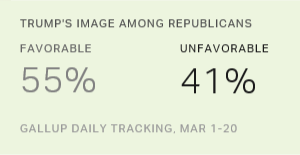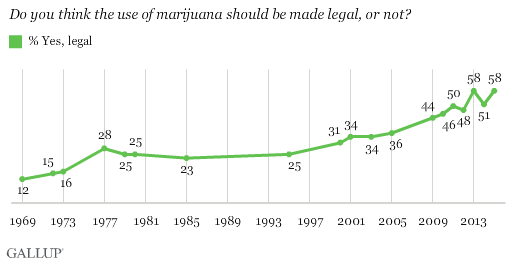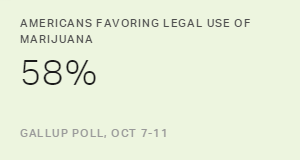
Story Highlights
- Between 54% and 61% of Republicans have viewed Trump favorably since July
- Trump’s image more negative than other GOP front-runners in previous years
- Republicans who view Trump positively are older, more likely to be men
PRINCETON, N.J. — Republicans nationwide remain more positive than negative in their views of Donald Trump, with 55% viewing him favorably and 41% unfavorably so far in March. Despite Trump’s extraordinary journey since last summer as the central — and controversial — focus of the 2016 election, Republicans’ views of the billionaire businessman have generally held steady. His image today is roughly where it was last July.

These trend data are based on Gallup Daily tracking of more than 1,600 Republicans who have rated Trump each month since July. Overall, Trump has averaged a 57% favorable rating and a 37% unfavorable rating among Republicans over that period. Since Trump’s favorable rating peaked at 61% in January, it has been lower each of the past two months. But from a broad perspective, the month-to-month changes have been relatively minor.
The relative stability in Trump’s favorable percentage — ranging between 54% and 61% — shows that his supporters are fairly locked into their support and are not dramatically affected by what Trump says or does, or by what the media and rival candidates say about him. This, in turn, may reflect that Trump was well-known early on, and that many Republicans formed a fairly firm opinion of him in the early stages of the campaign.
On a comparative basis, Trump’s popularity among Republicans is roughly similar to where Mitt Romney was in February 2012 (59% favorable, 31% unfavorable), although fewer Republicans had an opinion of Romney four years ago, giving him a higher net favorable than Trump’s today. In March of election years prior to that, the eventual Republican nominee had much higher favorable ratings among his own partisans, with John McCain in 2008, George W. Bush in 2000 and Bob Dole in 1996 all earning favorable ratings among Republicans in the 80% to 90% range.
Few Young, Female Republicans Are Pro-Trump
Continue reading “Trump’s Image Among Republicans Continues to Tilt Positive”







